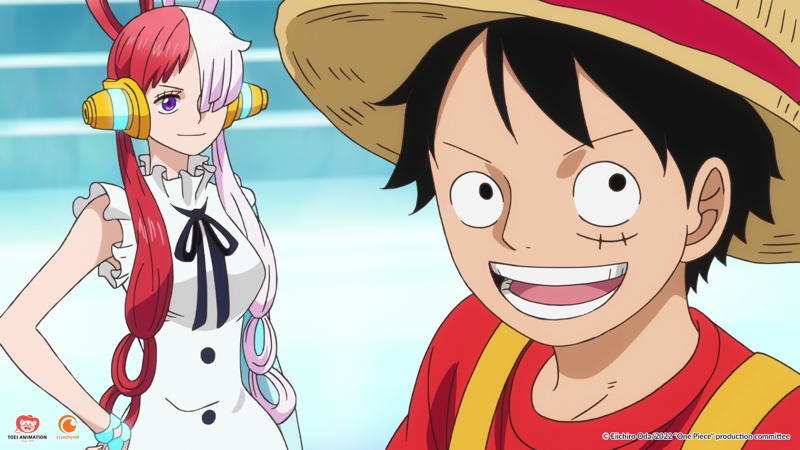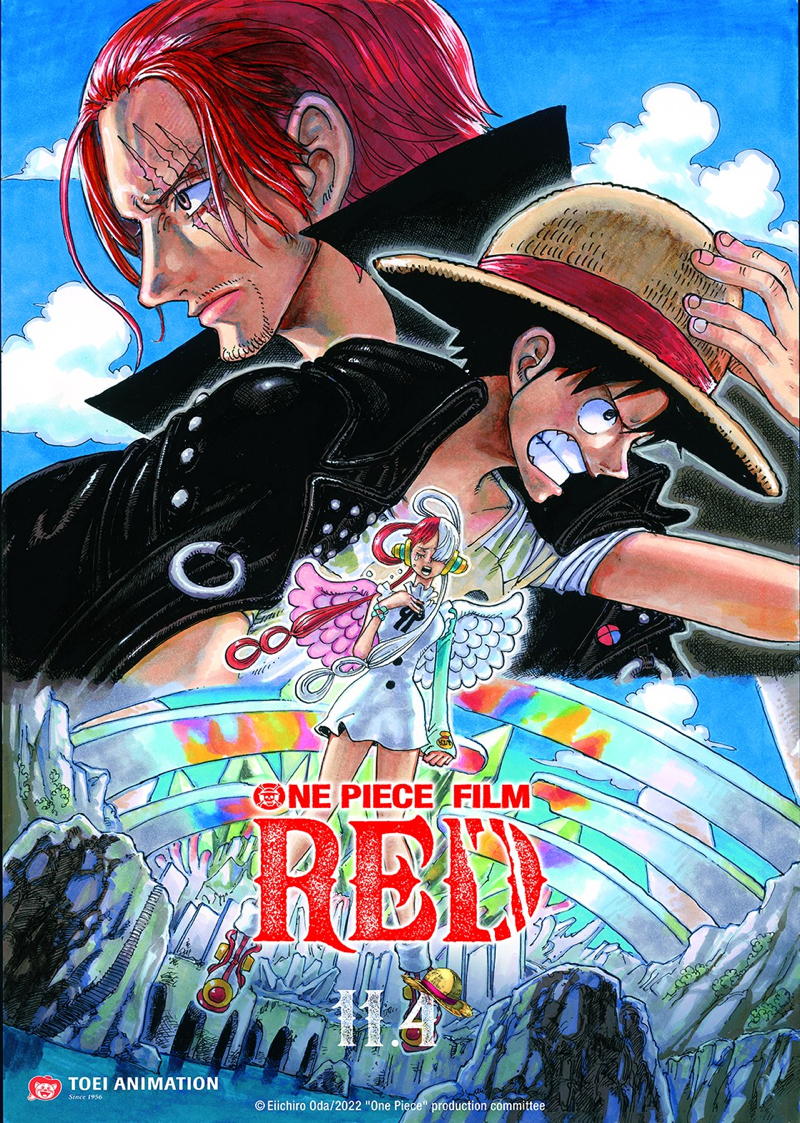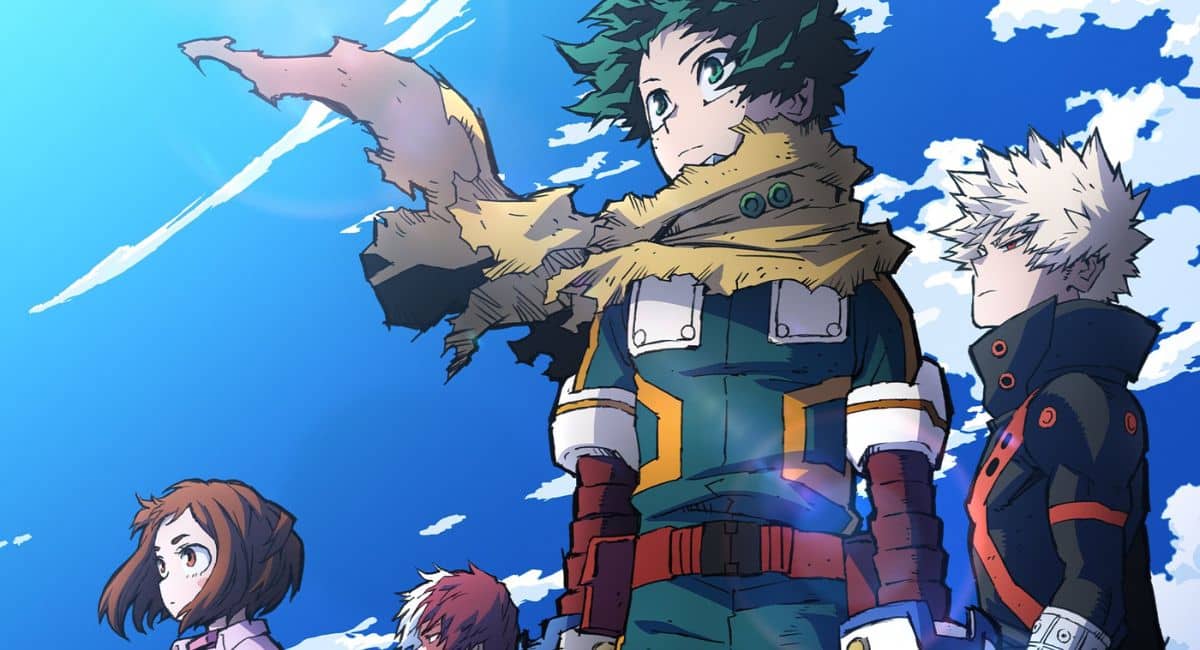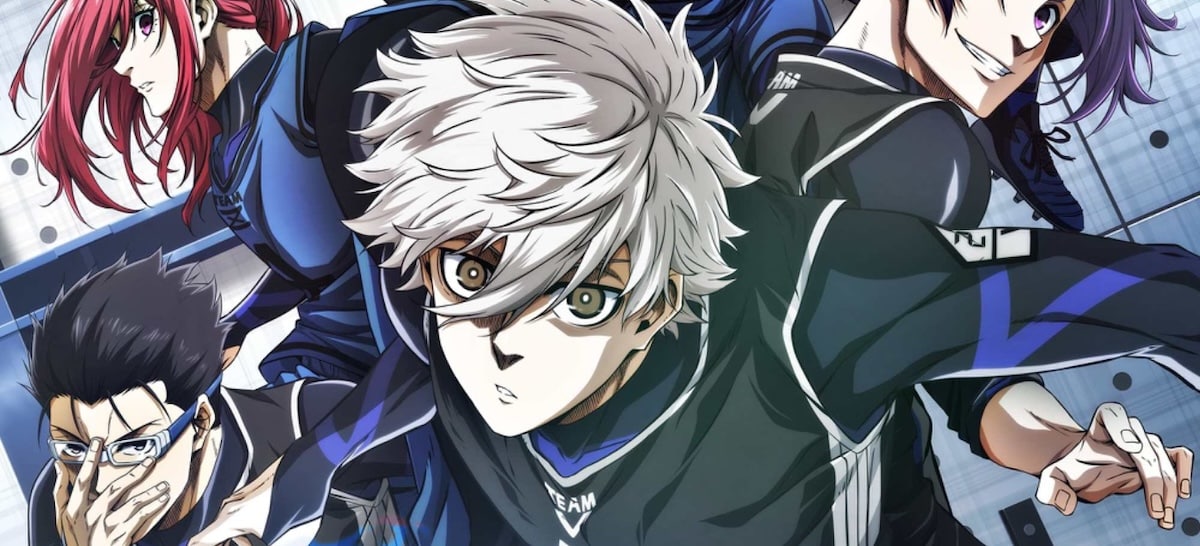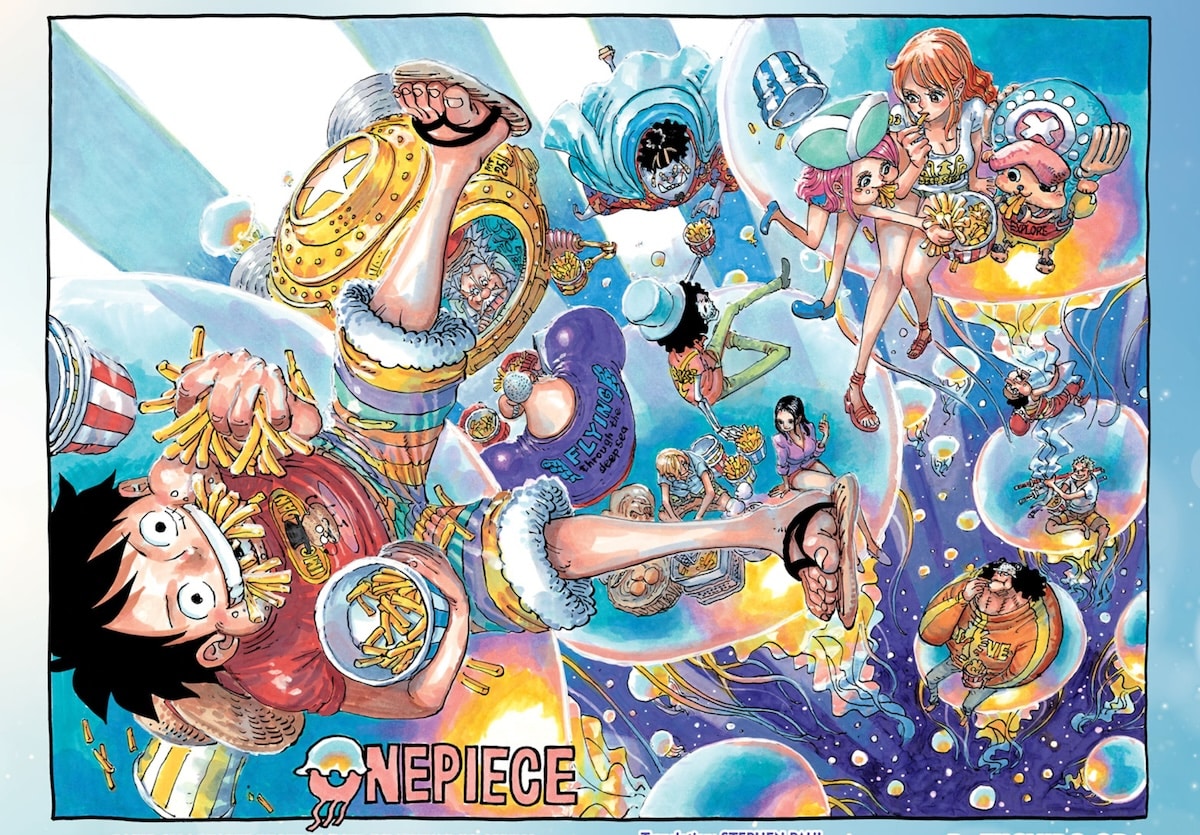By Marion Peña
One Piece Film: Red is weird, for a One Piece movie. But that’s all right, since One Piece is weird to begin with!
Going in, I didn’t have any expectations. I tend to enjoy the more recent One Piece films, since Oda’s involvement leads to some plausible circumstances when it comes to lore or worldbuilding that can apply to the original manga. What makes Red particularly weird for a One Piece movie, for me, is that it’s emotionally messy and unhinged, much like the manga itself. I’m so used to One Piece movies being quick and snappy affairs. They usually double as spectacle-laden fanservice in between production of arcs/sagas in the manga, and an opportunity to snag new fans into the fray by providing an original story–which doesn’t need the added context of 1,000 chapters to enjoy on its own merits.
Usually this means that the scriptwriters choose between giving the movie-original characters a utilitarian role or relegating them to some vague support function, with the antagonistic ones usually getting some tragic plot-dump backstory in the 11th hour to be humanized. It’s a tried and true formula for a lot of stories and their adaptations, especially movies based on Shonen Jump manga. This is fine when it happens in the manga, because there will always be enough chapters to allow readers to connect to the characters and digest the content at their own pace.
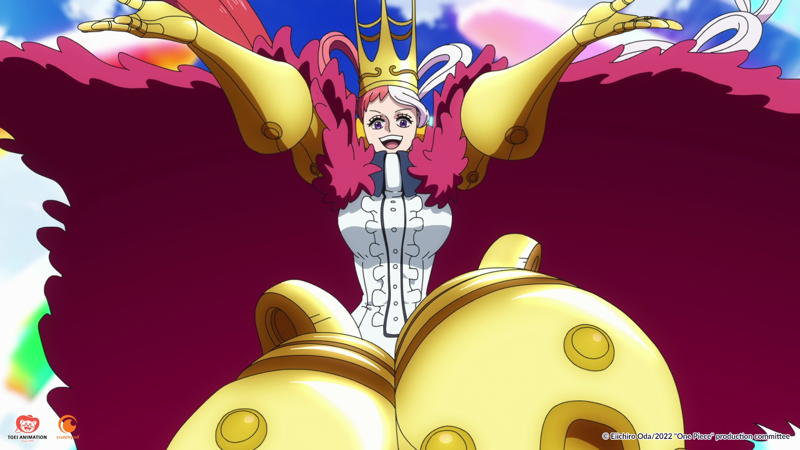
Red bucks this trend by giving us Uta, a character who has connections to Luffy and his inspiration for becoming a pirate, Shanks. Uta, being the poster girl for this movie, carries the plot, animation, and performance on her back! The decision to lean as much as possible into this original character was the smartest decision Red could have made, because it allows the film to explore themes and ideas that One Piece as a series has mingled with before, but through another lens.
One Piece fans come in many colors. We have the power-scalers, who foam at the mouth for more fights, and obsess over raw numbers like bounties so they can juggle their favorites while pitting them against their friends’ favorites like an episode of Death Battle. There’s also the theory-crafters, who comb through all of the lore and worldbuilding sprinkled throughout the series with a fine edge, in order to glimpse ever so closely into a hint of the patterns within the details that make up the biggest picture possible in Oda’s imagination. Adventure fiends who savor the wanderlust and spirit of freedom embodied by Luffy. There are many ways to enjoy One Piece! And while watching Red, I thought it was slightly clumsy in its initial approach, because of some jarring transitions, especially when it came to inserting flashbacks, as sometimes we’d get a normal flowing conversation with its own BGM completely grinding to a halt. I’ve seen glass shatter more subtly than that. But regardless, gradually this movie did tick off the boxes which mark a good One Piece story. For that, I have to thank Uta.
Uta is an original character created for this movie. She is an idol who sings and dances, using her performances to speak to everyone seeking refuge from the hardships in this world, whether they be victims of pirates, corrupt officials, or misguided opportunists. Off the bat, this makes for a different premise for a One Piece movie than what we’re used to as One Piece fans, because it means we get musical numbers! There are at last five or six fully voiced song tracks, performed by Uta (using the voice of Ado, a 20-year-old viral sensation in Japan), with different musical styles and genres from swing, ballad, jazz, and heavy rock–depending on the context of the movie, since it’s implied that some of these songs are improvised in the moment. This induces tons of excitement as a viewer, because it adds to the feeling that the action is developing in real time, in tune with the emotional state of this character.
Having the flow, tension, and plot directly affected by the emotions and goals of this character is something pretty common for an antagonistic force, and we see it pretty often in the manga. But rarely do we get so squarely into that character’s headspace as we do with Uta. Her flashbacks with Shanks and Luffy, and the moments she experienced while growing up separated from them do a perfect job of providing the context and impetus for both her motivations and desires. I can completely understand why she can hug and tease Luffy, and in the same breath condemn and incapacitate his crew for refusing to give up piracy. People are messy, emotionally complex beings who react in inexplicable ways depending on their different environments and experiences. Uta is the epitome of that. She is the hottest goddamned mess I’ve ever seen in One Piece. She has gone through some shit, and by George if she’s not gonna sing about it, you won’t ever freakin’ know how the hell she feels about it!!
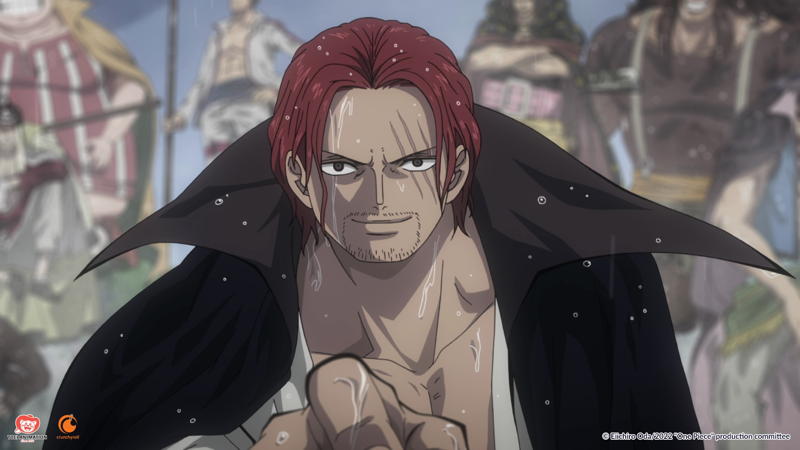
And goddammit, I have some feelings too, after watching that! I think it’s genius to have such an emotionally wrought and bare character be a performer. Someone charismatic. An existence that lives through connecting with others through the sheer power of communicating by conveying those emotions. Of course she’s popular, and enraptured millions of hearts through the power of song–she knows exactly what you want because she lived through it! It’s easy to shrug or brush off Uta’s charisma because of her devil-fruit power weaponizing her ability to sing, like some MacGuffin that turns her into the embodiment of plot. But I think that the backstory scenes sprinkled throughout the films runtime did a wonderful job of grounding her connection to Luffy and Shanks–characters we all know and love as pillars of what makes One Piece so enjoyable from the first chapter–because they weren’t just crammed into the last quarter. With each flashback, we got another piece of context for why and how Uta acts the way she does. Her values were shaped by her interactions with these characters we love, and that in turn colors our perception of her as we begin to understand how her character was shaped by the world she lived in. We get the full brunt of it through her songs, which thankfully were translated, and expresses lyrics severely relevant to the themes One Piece loves to dive into–like freedom, self-actualization, and the power of bonds.
About what felt like halfway through the film, I got the impression that once the planners decided to have music be a vital part of the experience, the decision was made to make this some kind of promotion of Ado’s music. Cross-media pollination through the form of music, movies, animation, television, books, etc; is an exceedingly common content strategy used in Japan, used to wide success especially when it comes to anime! To a cynical consumer, this can probably feel like “selling out” whenever a property goes that route and converges with some other IP or creator. I found myself internally debating where I stood when it came to that stance while watching the movie. Ultimately, I decided that it was a success. My experience while having Ado’s music essentially shoved into my face, was one where I came in not knowing that was going to be the case, but gradually accepting it because I found immense value in the animation, performance, and poetic/thematic value of those songs once it was all woven together. For those curious who haven’t seen the film, the songs can actually be found on Ado’s youtube channel, they are subtitled with (UTA from ONE PIECE FILM RED), however the animation is not the same as the movie. The movie features cuts with rotoscoped 3DCG, reminiscent of virtual youtubers (otherwise known as vtubers), a subgroup of content creators who use animated avatars as personas to stream content. Overall, the movie’s animation was very fluid and impeccably timed to the music, in a way that evokes both a live musical performance, and a music video–a decision I agree with, because it’s animation, why the hell not use the medium to your advantage? If I had to voice a complaint about Uta’s (and by extension, Ado’s) performance, is that Ado’s voice sounds way too grown up to be voicing the songs for child Uta in her flashbacks. It was jarring to hear a child speak like a child and then sing like an adult. Stuff like that is easy to handwave with the existence of devil-fruits (she has the power to SING, duh!) or by some random universe lore (Shanks said she was gonna take over the world with her singing when she was already only 5!), at least in hindsight, but in the moment I experienced, I couldn’t justify it for the first time. Promotionally and for the sake of logistics, I understand why it had to be done that way, however.
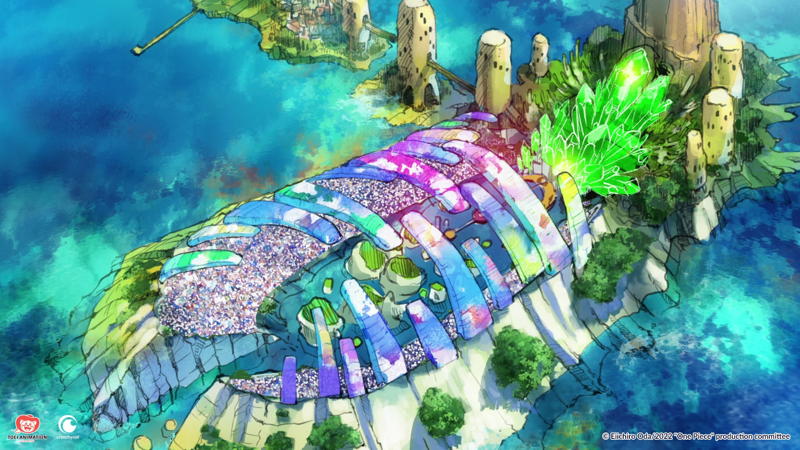
From here on, this review will contain spoilers.
As of November 5th, 2022 here in the States, Oda has confirmed in a video SBS for Film Red that Uta’s silhouette was in Chapter 1055: The New Era, making her existence canon, though whether the events of the movie actually happened or not are up in the air, as they’d only be possible to fit in after the events of Wano Country and the current island we’re on, Egghead. The last time something like this happened was back when One Piece Film: Strong World was released. We learned about Golden Lion Shiki, the only pirate to escape from Impel Down before Luffy, as part of some flavor text in Volume 54, Chapter 530, only to see him in a movie that premiered 10 months after. While the implications of his existence didn’t seem to amount to much, Oda then decided to reveal to us in Chapter 907 that Shiki was part of a group called the Rocks Pirates, with other major characters like Charlotte “Big Mom” Linlin, Kaidou, The King of the Beasts, and Edward “Whitebeard” Newgate. For all we know, there is already a precedent set, and Oda might have more in store for Uta in the grander scheme of the One Piece world.

Now that we have that out of the way, it’s time to address the elephant in the room. Did Uta die at the end of the film, and does this mean she’ll show up later in the manga or not? Tsutomu Kuroiwa, the lead screenwriter says she died, but ultimately it means nothing, since the events of this film are too difficult to fit in between what happens in the manga. Now, does that in any way, shape, or form, affect the impact of the movie itself? Not for me. I think it’s neat to theorize and dissect events or trivia in order to discover and organize what can be canon or not from these movies. But, I also think that the anime for One Piece is its own beast, and it’s to the benefit of the franchise that the anime is allowed to explore and experiment with the material.
I found Uta to be a fascinating and compelling character. She is not aligned with pirates, the government, marines, or revolutionaries. She was raised by pirates, led to think that she was abandoned and betrayed by them, and decided to focus on using her talent to help heal victims around the world. But somewhere along the way, her perspective shifts and her tendencies evolve into a martyr complex! She genuinely believes that for the good of the world, in order to usher in a New Generation (the word she uses in Japanese is 新時代 (Shin Jidai), the same as Chapter 1055’s Japanese title), she should trap everyone’s souls in the alternate world made by her sing-sing fruit powers, and die in the real world. In the world she created, it was possible to manifest anything to meet basic human needs, and she would have all the power to punish wrongdoers or soothe the souls of any emotional or psychological pain with her music. The jump in logic is drastic, but the train of thought is easy to follow, thanks to the placement of her flashbacks. While watching the events unfold, and Uta progressively getting more desperate to push everyone into following her ideal, for some reason I kept thinking about the short story Harrison Bergeron. Uta’s idea of equality is to force everyone down to the same level, as decided by whatever her arbitrary standards might be. For those who refuse to follow, they are shackled, incapacitated, and physically forced into submission. It illustrates how in following her ideal of “freedom from persecution,” Uta must contradict herself by oppressing whoever she perceives to be the greater evil. We’ve already seen this warping of a noble ideal through Big Mom’s dream of “having every race eating at the same table” in the Whole Cake Island Arc. What makes this different is the juxtaposition between Uta’s dream and Luffy’s.
Luffy has always had the same goal of obtaining the One Piece and becoming King of the Pirates. In more relatively recent chapters, we’ve learned as readers that the desire to become King of the Pirates stems from his belief that whoever holds that title is “the freest man in the Sea.” Luffy, the character who refuses to bend to anyone’s will, who storms like a typhoon into every island and eradicates oppression in his wake, whose heartbeat resembles that fabled “Drums of Liberation,” a signal of the return of the Sun God Nika! A man who embodies freedom, wants the affirmation that he truly has it. When Luffy has a face to face confrontation with Uta about his dream, he claims he’s going to begin the “New Generation” by finding One Piece. It’s a direct challenge to Uta’s concept of “New Generation,” which boils down to freedom through avoidance of reality’s harshness.
What I enjoy the most about Luffy and Uta’s relationship is that Luffy never physically attacks her, at least directly. It’s even addressed at the very end, when Uta points out that he’s taller than her now, as opposed to when they were children. Luffy says he is stronger and that’s why he couldn’t attack her seriously–the subtext being that he never attacks his loved ones, like when he confronted Sanji in Whole Cake. It’s a great nod to Luffy’s emotional intelligence, who has noticed throughout the film’s runtime that Uta has been avoidant when it came to addressing her feelings about Shanks, especially after learning the truth behind their separation. Once they are both able to settle their differences, there’s a palpable sense of relief and exhaustion. My favorite scene is after the climax, when Luffy gets to sit down, his eyes partially obscured by shadows. Uta returns the strawhat, and we feel the weight of both their resolve, as the New Generation, both raised by Shanks. It wasn’t a triumphant moment, even though Luffy “won.” Although everyone trapped in the sing-sing world was saved, the cost was Uta’s life; she wagered with the expectation of losing regardless of the outcome. This movie actually did a phenomenal job of masking how bleak Uta’s outlook and “solution” for the injustices of the world, through the music, animation, and character interactions. A more cynical reading of this movie would still be accurate if they went as far as comparing Uta’s actions to that of a suicidal cult leader, though I’m unsure if the writers considered that possibility while fleshing the script. Even if it didn’t go that far, I’m still floored that a franchise movie veered close enough into this territory to warrant any kind of speculation at all.
Besides Uta, I want to take the time to sound off on some of the moments I loved watching. Unsurprisingly, most of them came toward the end as we approached the climax. All of the team-up attacks against the final baddie were animated sublimely, and echoed a lot of the tokusatsu tropes that wrote the handbook on battles against giant kaiju-like monsters. Usopp getting recognition from his deadbeat dad was oddly satisfying. Koby being given a prominent tactician role felt unexpected but warranted–the praise of his yet-unseen-on-panel Rocky Port exploits still being relevant to this day in the manga! Blueno and Bepo dragging their companions into this setting because they’re fans of Uta is a great side gag. Borsalino getting stopped and forced to submit by Shanks TWICE was absolutely exhilarating poetic justice, especially after how he successfully got in Luffy’s way twice in Sabaody Archipelago and Marineford. Brulee and Katakuri’s tender sibling relationship remains one of the most heartwarming surprises from the Big Mom Pirates. I’m also glad that this movie avoided the pitfall of shoehorning Sabo and/or Ace into relevancy. Uta took care of the “Luffy’s personal connection” role to full effect without needing the addition of a top ranking character in popularity polls to sell more tickets. Stuff like that is what gave Film: Gold an unwarranted blemish, and bloated One Piece: Stampede to almost un-rewatchable levels for me. Fanservice for the sake of itself adds almost no substance.
I’m very happy to say that I left One Piece Film: Red feeling slightly befuddled, but intrigued enough to continue mulling over what I saw. It was the complete opposite of Stampede, where I was exhilarated but gradually felt cold on it because there was no thematic meat to chew on. As I was writing this, I got more and more excited to tear into what worked and what didn’t for me. There’s no such thing as a perfect movie, but I can never hold it against anyone if I watch a movie that aims to do something. Red does that. So much so that I’m looking forward to the home video release, which I haven’t done since Strong World. One Piece Film: Red felt like a fresh new direction to take this franchise’s movies in, while also being a return to form–echoing how the manga handles the emotional aspect of its storytelling. Red is screening in North American theaters between November 4th-10th, 2022. If you’re a One Piece fan, or someone new to the series, I think this is a fine piece of media to dive into. People always bicker about when or where to start this series, and to me, the answer is “whatever looks interesting enough.” If you think a movie looks pretty or fun, go right ahead! If you like something, you’ll seek out more if you’re truly inclined. For those very people, the manga is currently available in print and digital through VIZ Media, and the TV anime is being streamed on Crunchyroll.
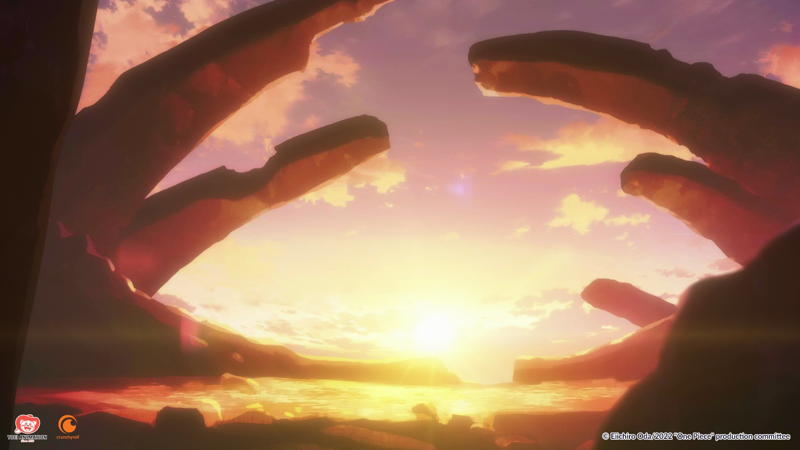
Marion is a Dominican writer based in NYC. They’ve been reading manga and comics since childhood, and writing/podcasting about them since 2015. If you’d like to see more of my work, all my projects are here: https://microwavey.carrd.co/


